| Recently, someone sent me photos of a presumed hybrid walnut tree, in hope that I could identify its parentage. This article shares what I have learned over the years studying hybrid walnut trees, mostly as they grow in Seattle. Much of the writing already appeared in my book North American Landscape Trees (1996). |
| In general, the 20 or so species of Juglans are variable, and cross (hybridize) readily. For the best determination of a species or especially a hybrid, a person ideally has: a mature specimen, to observe its growth form and bark; autumn timing, to observe its fall color and mature nuts. The experienced eye can often tell a given walnut tree species even from a distance, when it is defoliated in winter. But beginners can puzzle mightily even with all the ideal factors I just cited. |
The most widely cultivated and best known walnut trees are Juglans regia and Juglans nigra. My chart at the far bottom below, details their main differences.
|
| Since at least 1834, the name Juglans x intermedia has been used for hybrids between these two species. Such trees will vary, but most more resemble Juglans regia, Usually 11 leaflets. Nuts often sparse, thick-shelled, and small-meated. A clone named 'Vilmoreana' has 11 to 13 (15) markedly narrow leaflets, subtly toothed, and fragrant when crushed. |
If a person knows well these two species, he or she can readily identify their half-breed offspring. But on the West Coast of North America, there are complications. For, there are other black walnut species: in Arizona, Texas, and two in California. But only one is cultivated widely and crosses commonly: the Northern California Black Walnut, Juglans Hindsii Jeps. ex R.E. Sm. Compared to common black walnut, it is a smaller tree. Its leaflets are (9) 11 to 19 (23) and bluish-green, and dropping later in autumn. The husks are (1.25) 1.5 to 1.75 (2) inches wide, smooth, semi-glossy, light yellow-green. The nuts are 1 to 1.5 inches wide, very smooth and grooved faintly or not at all. It is native from far S Oregon into N California, and some people think it a cultivated version of the S Californian native species. It has been used much as a rootstock on which to graft orchards of Juglans regia, and planted very sparingly as an ornamental, almost exclusively in California. Thousand Cankers disease is now killing them off, and other walnut trees, too. Plant scientists are trying to find solutions.
|
| Juglans Hindsii x Juglans nigra |
| The Royal Hybrid Walnut |
An intentional cross made in 1879 by Luther Burbank of Santa Rosa, California. The cross occurs spontaneously in California. In Seattle, I know of several, and show pictures of seven pairs of nuts below --six Seattle trees and one from Burbank's garden in California. Leaflets (11) 17 to 19 (23), more slender and less hairy than those of Juglans nigra. Husks 1.5 to 2 (2.25) inches wide. Nuts (.75) 1 to 1.25 (1.75) inches wide, weakly to moderately grooved.
|
| Juglans Hindsii x Juglans regia |
| The Paradox Hybrid Walnut |
An intentional cross made in 1878 by Luther Burbank of Santa Rosa, California. The cross occurs spontaneously in California. In Seattle, I know of none, but show below a picture of a pair of nuts from Burbank's garden in California. Leaflets (7) 11 to 15. Nuts borne lightly, (.75) 1 to 1.5 inches wide, often squarish, thick-shelled, weakly grooved. It has been used much as a rootstock on which to graft orchards of Juglans regia.
|
Burbank had hoped to obtain fast-growing trees that would yield valuable wood and nuts. The hybrids vary in vigor --some are runts-- the nuts are usually no improvement, and the trees have inferior and late fall color relative to the clear bright yellow of Juglans nigra. An extremely large Juglans Hindsii x Juglans nigra tree on Oregon's Sauvie Island, had been misidentified and called the "National Champion" Juglans nigra for its great size. Other Juglans hybrids exist, but I have no nuts of them to show on this webpage. Especially helpful would be nuts of Juglans regia x Juglans nigra. But I know no such trees in Seattle.
Back |
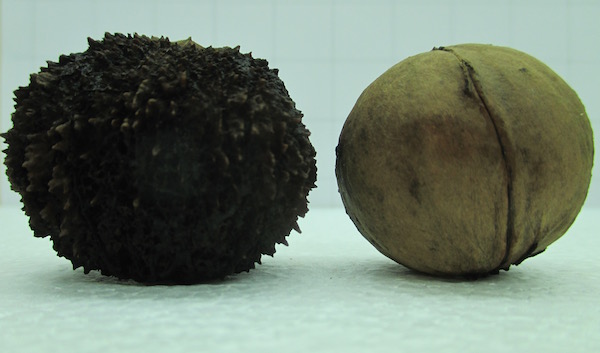
Juglans nigra & Juglans Hindsii (photo by ALJ)
|
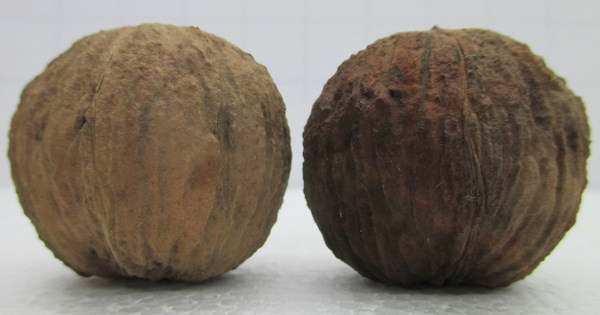
Juglans nigra x Juglans Hindsii from Burke-Gilman Trail (photo by ALJ)
|
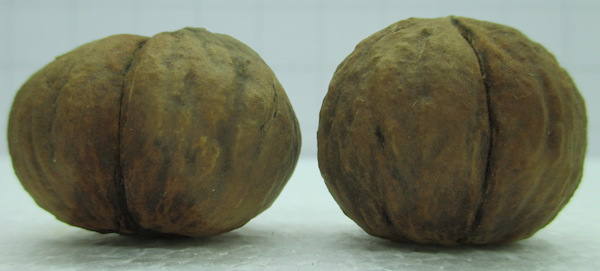
Juglans nigra x Juglans Hindsii from Washington Park Arboretum (photo by ALJ)
|
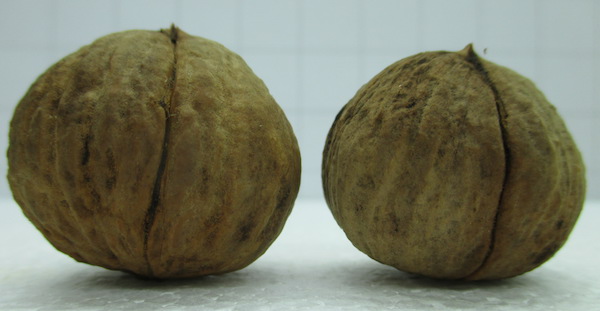
Juglans nigra x Juglans Hindsii from 22nd & James St (photo by ALJ)
|
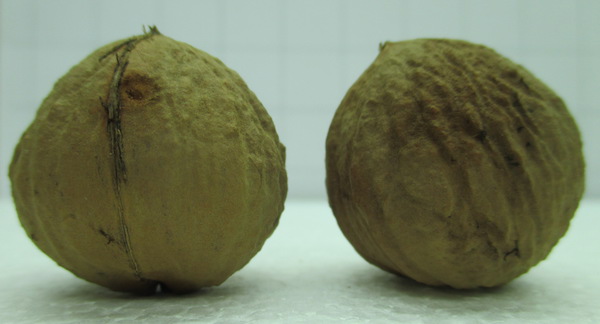
Juglans nigra x Juglans Hindsii from Louisa Boren Viewpoint (photo by ALJ)
|
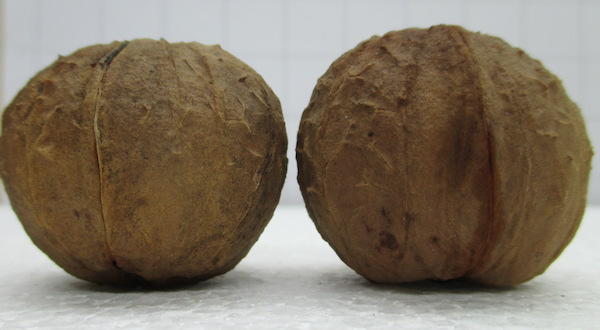
Juglans nigra x Juglans Hindsii from Luther Burbank's garden (scan by ALJ)
|
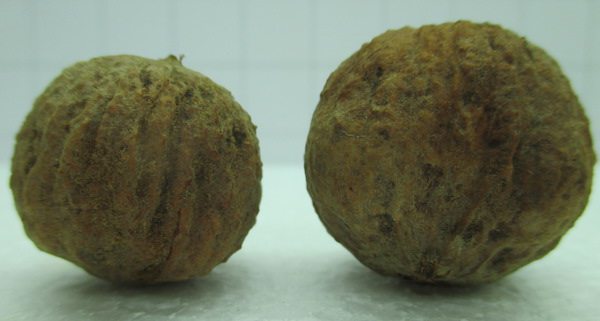
Juglans nigra x Juglans Hindsii from 18th Ave E from Luther Burbank's garden (photo by ALJ)
|
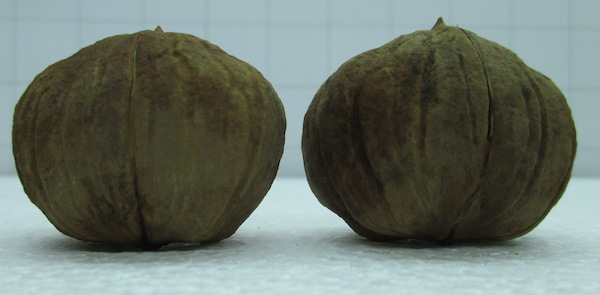
Juglans Hindsii x Juglans regia from Luther Burbank's garden (photo by ALJ)
|

